Serge Attukwei Clottey (b. 1985, Accra, Ghana), a multidisciplinary Ghanaian artist, has garnered international acclaim for his innovative use of materials and his profound explorations of themes such as migration, identity, environmentalism, and consumer culture. Through a wide array of media, including paintings, sculptures, performance, and large-scale installations, Clottey offers a unique perspective on the intersection of personal and communal histories. His work is often rooted in his Ghanaian heritage, but it transcends local matters to touch on broader global issues. Central to his practice are his use of everyday materials and his ability to transform them into potent symbols of both loss and resilience.
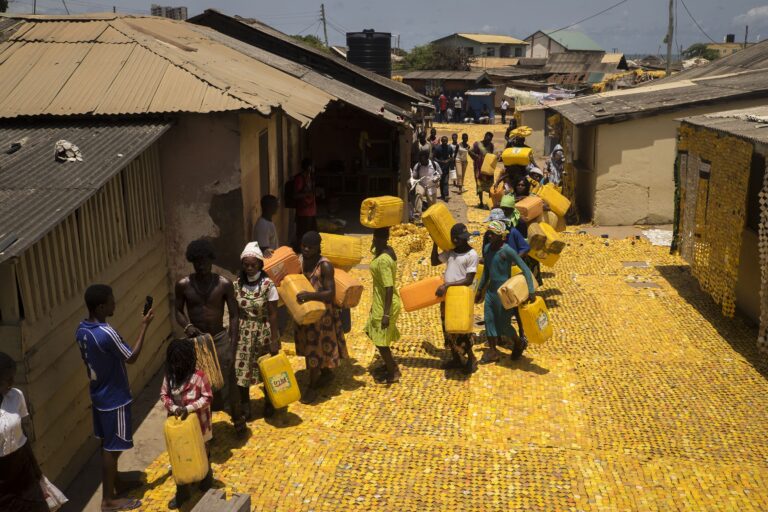
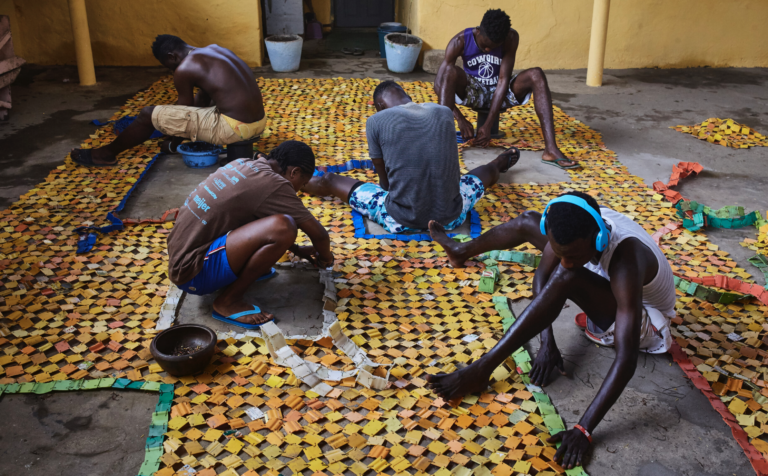
At the core of Clottey’s work is his deep engagement with material culture, particularly the politics surrounding consumption and waste. His large-scale installations are perhaps the most striking examples of this. One of his signature materials is the ubiquitous yellow plastic jerry can, a container widely used in Ghana for collecting water. These jerry cans, also called “Kufuor gallons” (after former Ghanaian president John Agyekum Kufuor, whose presidency saw significant water shortages), have become a symbol of both necessity and scarcity in a region where water resources are often limited.
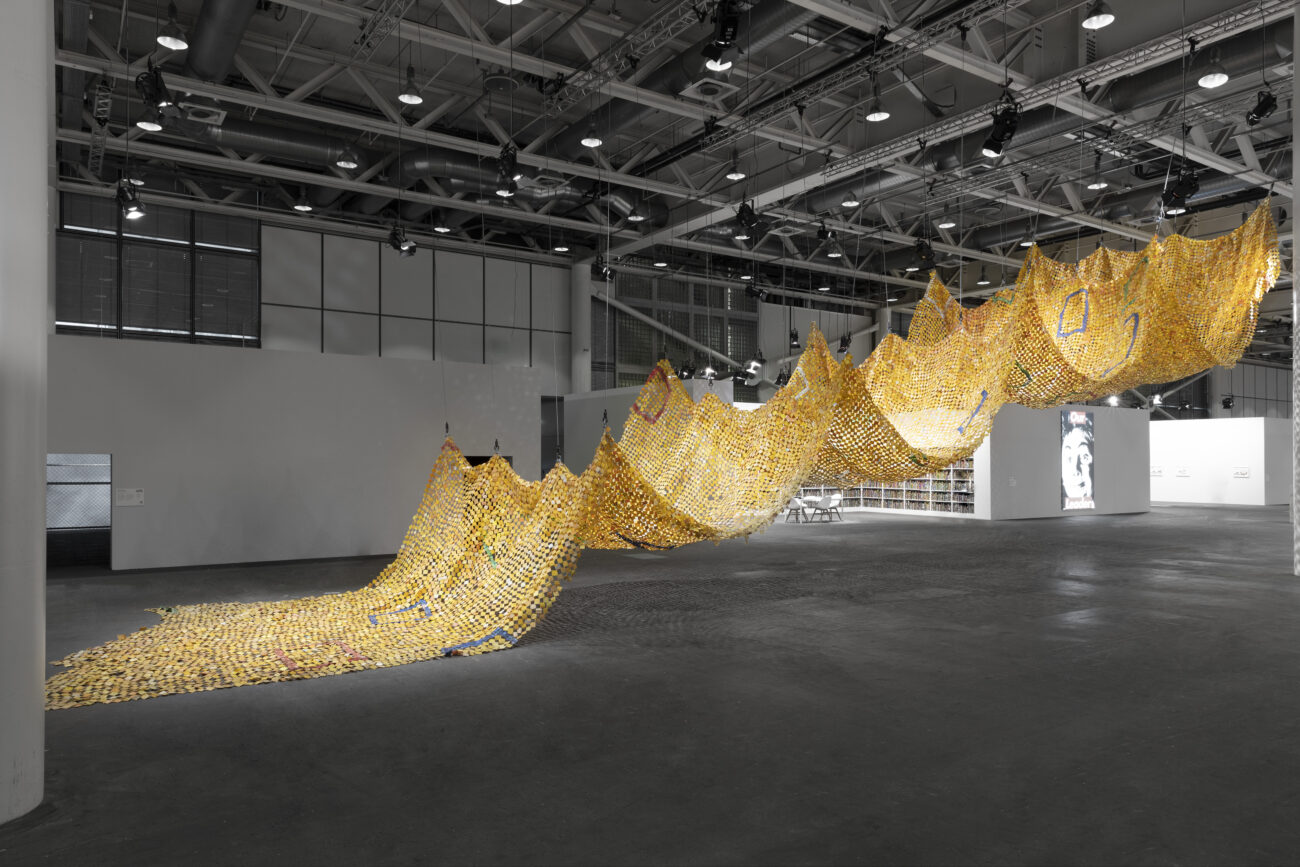
Clottey’s series “Afrogallonism” is a direct response to these issues. By cutting, flattening, and reassembling these jerry cans into intricate tapestries or sculptural forms, he critiques the impact of global consumerism, while also drawing attention to the environmental degradation it causes. These reworked jerry cans, once symbols of resourcefulness in the face of scarcity, are reimagined as powerful visual metaphors for resilience and survival. The bright yellow plastic, with its industrial origins, becomes a striking contrast against the natural landscapes in which his installations are often placed. This juxtaposition encourages reflection on the relationships between humans, nature, and the global economy. In many ways, Clottey’s work challenges the viewer to reconsider the life cycles of objects—what we discard, what we reuse, and how these choices affect both the environment and individuals.
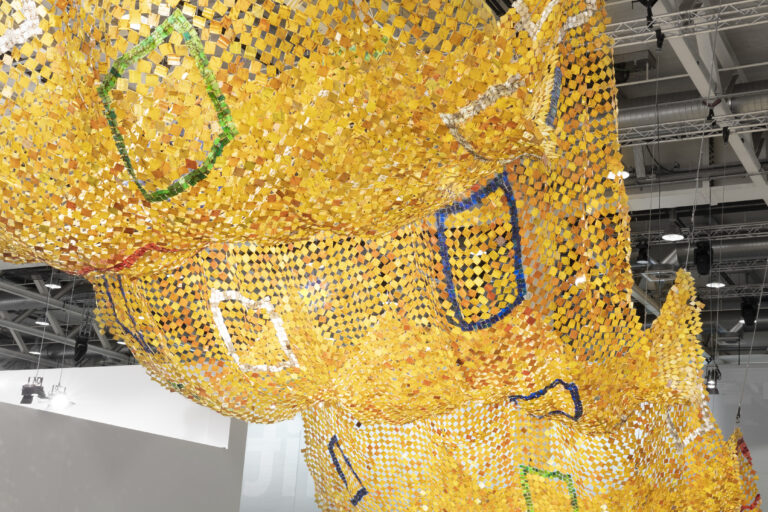
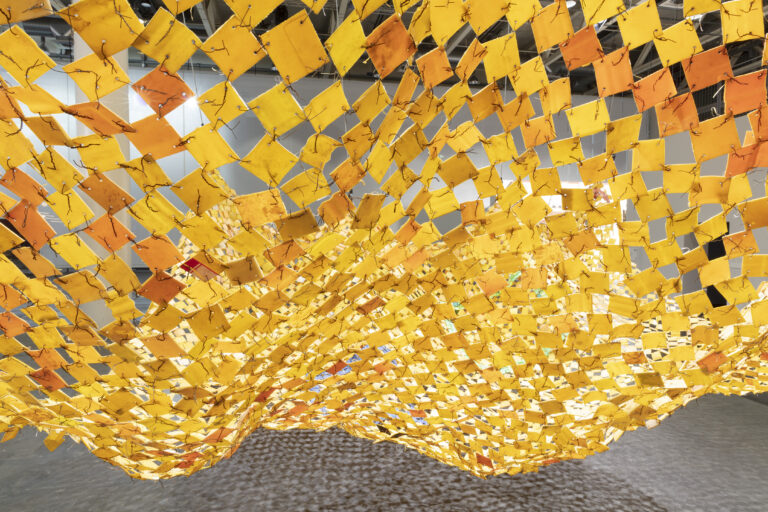
Afrogallonism is a word I made up somewhere around 2012 and 2013. I’ve been using these gallons for roughly 18 years and the work has evolved over time. I made up this word because I was looking at the history of the gallons. Afro is a colonial word attached to migrants and these gallons were imported; they are not originally from Africa. For me to explore this concept of migration through the objects, I made up the word ‘Afrogallonism’, which essentially means this is Africa now. This is how we have been able to transact the same gallons back to the West.
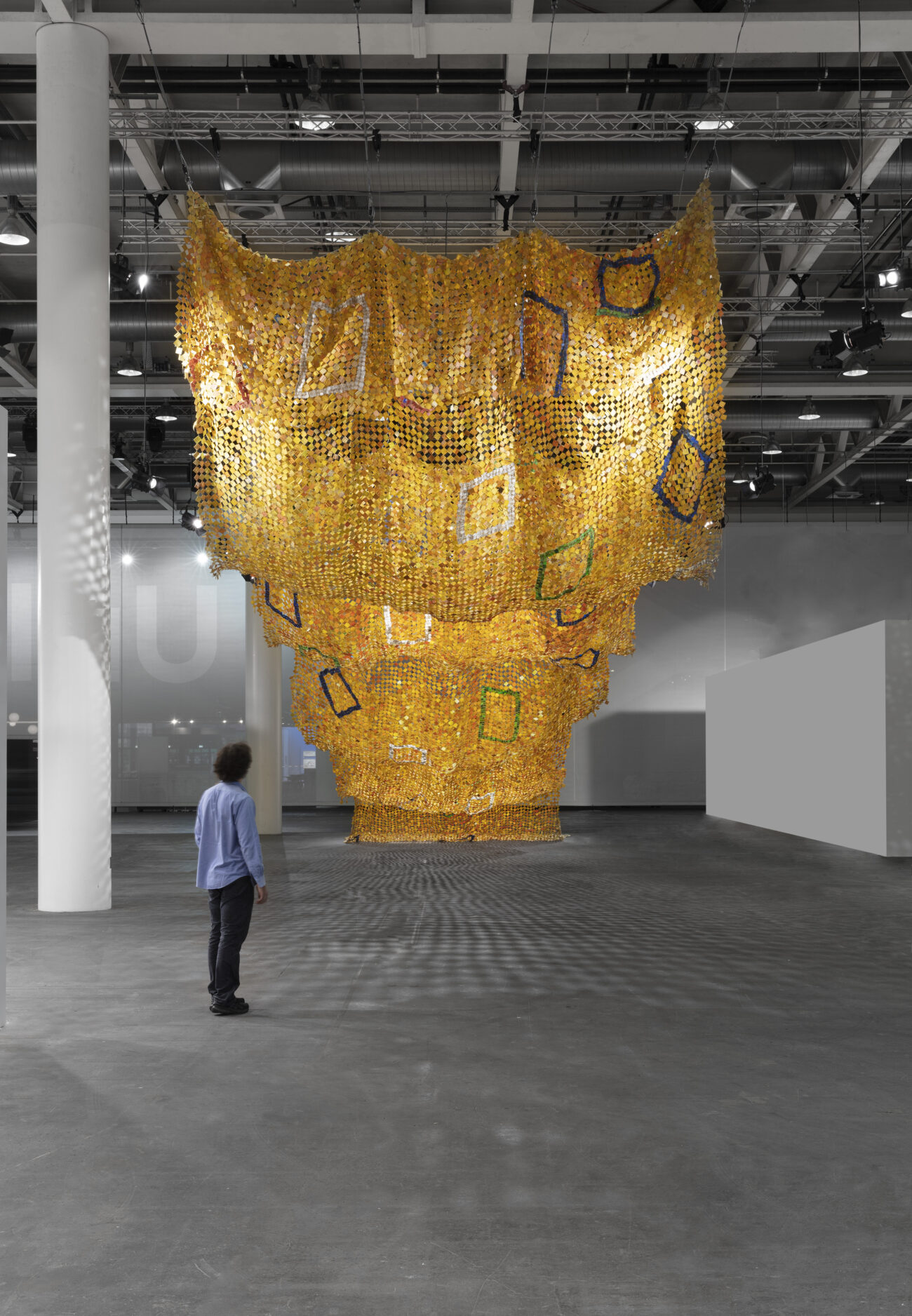
In addition to their environmental critique, Clottey’s jerry can installations also evoke a deeper sense of cultural identity and migration. The cutting and reshaping of these objects parallel the ways in which individuals must often reconfigure their identities, especially in the context of displacement or diaspora. In this sense, Clottey’s art becomes a site of negotiation, a space where traditional values intersect with the pressures of modern life.
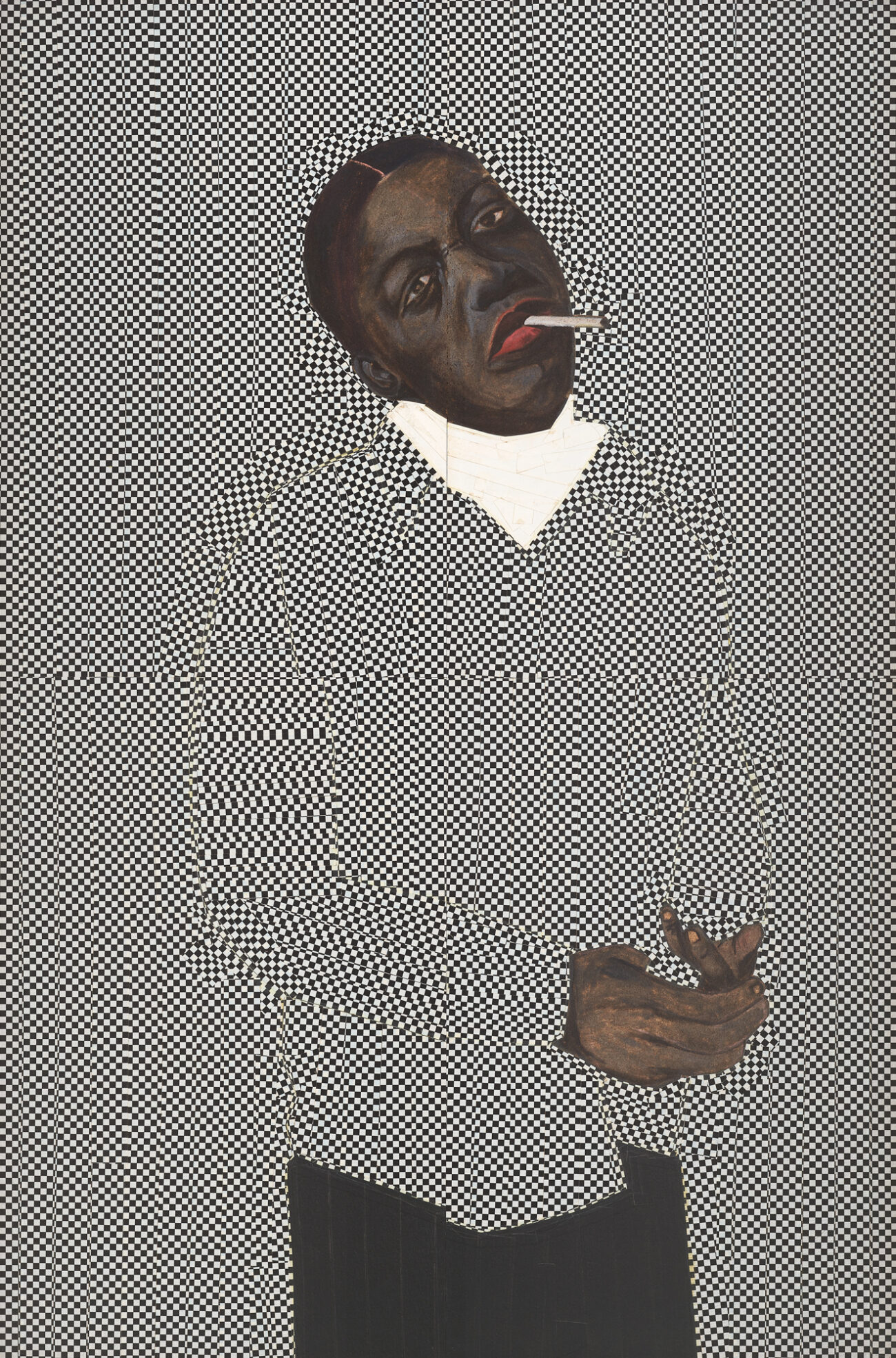
While Clottey’s installations have gained him widespread recognition, his paintings offer another layer of his artistic practice, where the body serves as both subject and symbol, delving into personal narratives and broader reflections on African identity. He often renders human figures that are abstracted and distorted, giving them a sense of perpetual transformation. This portrayal is a reflection of the fluidity inherent in identity formation, particularly in postcolonial contexts where traditional values are continuously being reshaped by the demands of contemporary society. Each body appears fragmented, elongated, or amorphous, as if in constant flux—a visual metaphor for the ongoing negotiation between cultural heritage and the influences of globalism.
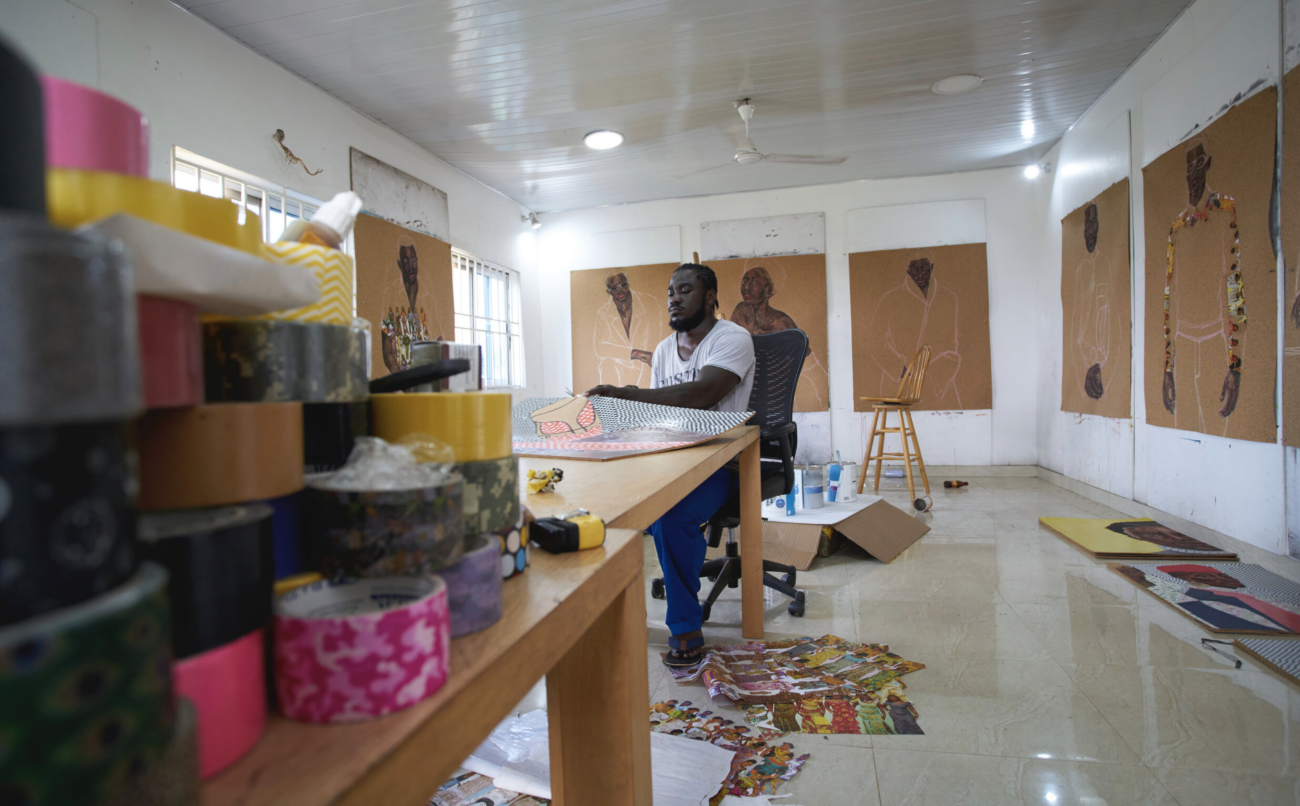
Clottey’s utilitarian derived practice, duct tape paintings and jerry can installations speak to the realities of life in postcolonial Ghana. Just as the jerry cans in his “Afrogallonism” series comment on resource scarcity and survival, the duct tape paintings reflect on repair and resilience—both literally and metaphorically.
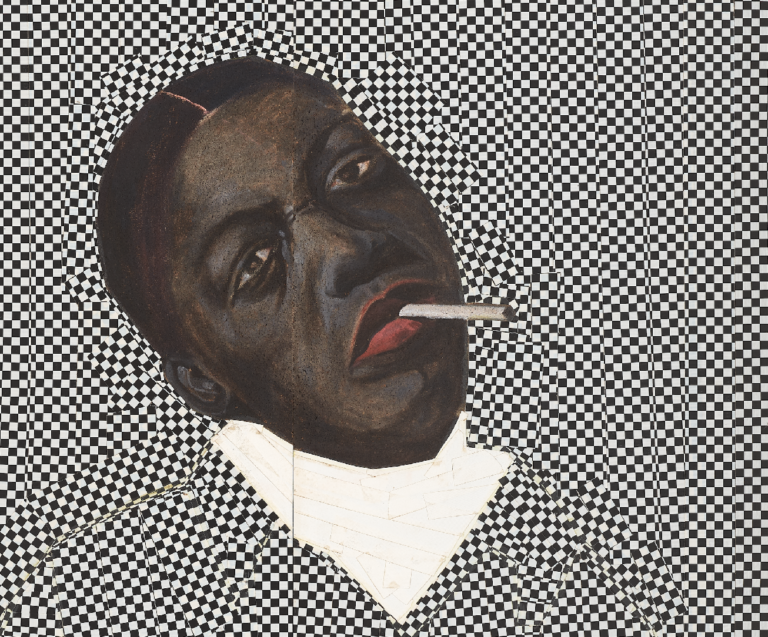
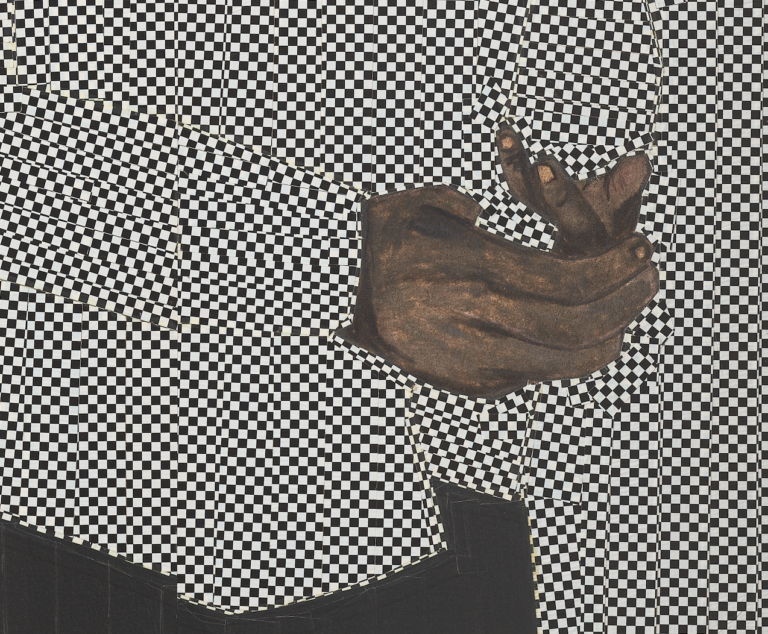
Serge Attukwei Clottey’s art is a profound meditation on the complexities of identity, memory, and the global forces that shape life in Ghana today. By reclaiming discarded materials and fusing traditional and modern aesthetics, Clottey challenges our understanding of consumerism, environmentalism, and migration. His work offers not just a critique of global systems but also a celebration of the creativity and resilience of those who navigate these systems on a daily basis. Through his large-scale installations, paintings, and performances, Clottey invites us to consider how our individual and collective identities are shaped by the objects we use, the histories we inherit, and the global currents we inhabit.
Top image courtesy the artist and Lorenzelli Arte. Photo by Nii Odzenma.
Written and designed by Sarah Greenwood.

